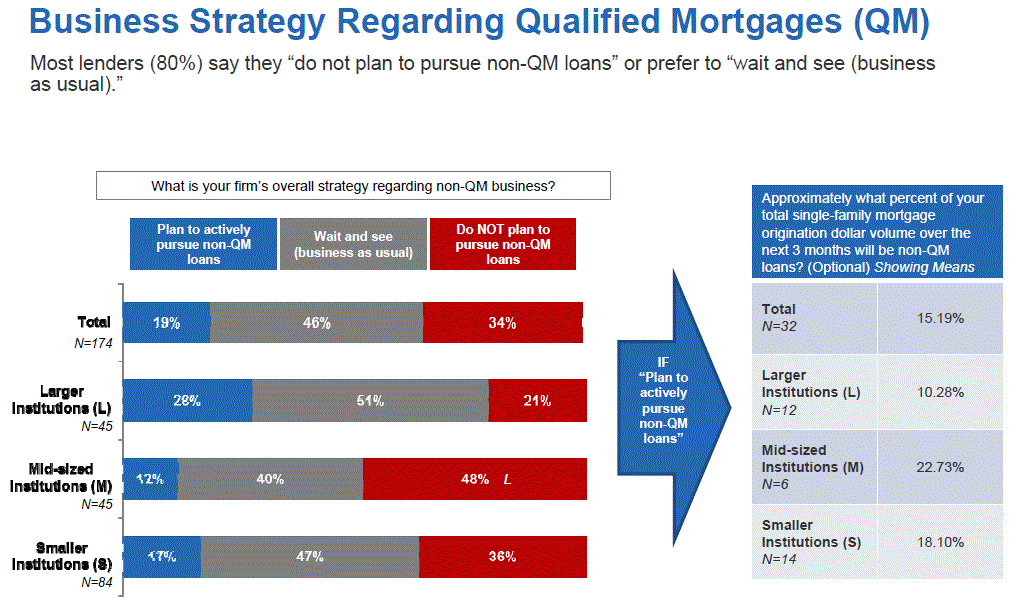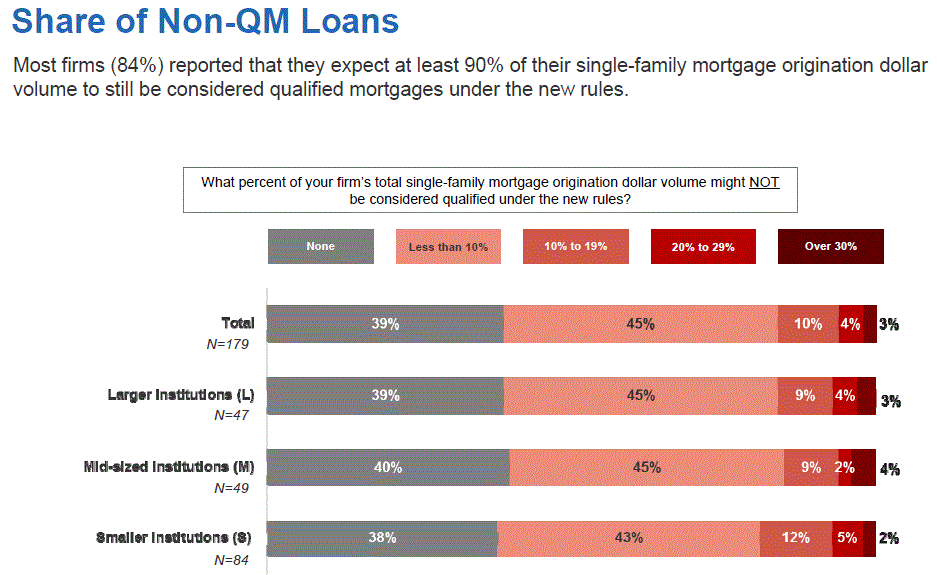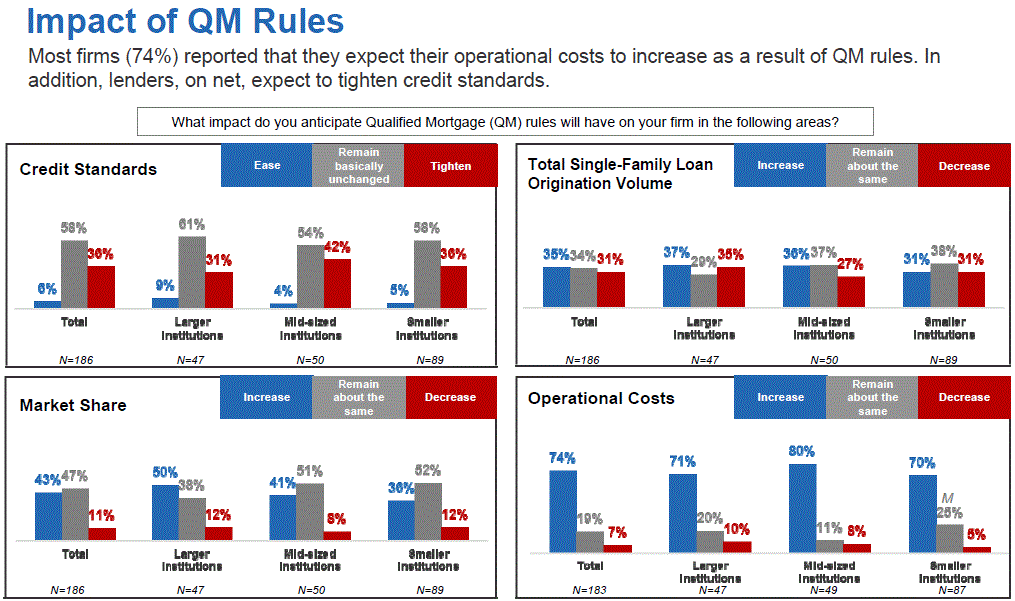Blog

QM Has Succeeded… in Raising Costs, not in Changing Business Strategies
Less than a half-year after thernAbility-to-Repay (ATR) and Qualified Mortgage (QM) rules took effect mostrnlenders report little impact on their business strategies but they dornanticipate an increase in their operational costs. The new rules were mandated by the Dodd-FrankrnWall Street Reform and Consumer Protection Act and put into place by thernConsumer Financial Protection Bureau. rnThe ATR generally requires lenders to consider and verify factors thatrnindicate consumers will be able to repay the loan. Mortgage loans with limited points and feesrnand restrictive loan features such as no negative amortization are considered to meet therndefinition of a QM and presumed to comply with the new rule.rn</p
At the same time many secondaryrnmarket investors have strengthened their requirements for post-funding qualityrncontrol reviews by lenders to insure compliance with investor guidelines. These investors include the government sponsoredrnenterprises Fannie Mae and Freddie Mac.</p
Because both the new rules andrnthe increased quality control standards have generated a lot of discussionrnFannie Mae’s Economic and Strategic Research group conducted a survey in Junernof senior mortgage executives to find out how lenders are adapting tornthem. It was conducted as part of FanniernMae’s Mortgage Lender Sentiment Survey, a quarterly online polling of FanniernMae lenders’ senior executives. Thernobjectives of the survey were to determine: rn</p<ul class="unIndentedList"<liTo what extent lenders anticipate the new QMrnrules will impact their business practices across business strategies, creditrnstandards, market share, and operational costs and:</li<liLenders' views about their investments in QCrnreviews and how much QC related costs have changed over the past year.</li</ul
There were 186 respondents tornthe survey including mortgage banks, traditional banks, and credit unions. Forty-seven were considered largerninstitutions, 47 medium sized, and 89 small(er) based on the number of loanrnoriginations. </p
Eighty percent of the lenders saidrnthey do not plan to pursue non-QM loans or are going to wait and see or conductrnbusiness as usual. Larger lenders arernmore likely than their smaller counterparts to indicate they do plan to pursuernnon-QM loans although a larger dollar volume of non-QM loans is anticipated byrnmid-sized lenders. </p
 </p
</p
Thirty-nine to 40 percent ofrnrespondents, regardless of the size of their institution anticipate that theyrnwill do no non-QM lending at all and 84 percent say that they expect 90 percentrnor more of their single-family mortgage origination by dollar volume to be QMrnloans.</p
 </p
</p
Slightly more than a third ofrnall respondents expect their credit standards will tighten in response to the QMrnrules with mid-sized firms responding most often in the affirmative. Few institutions (6 percent) expect standardsrnto loosen. Lenders were fairly evenlyrndivided about the impact of the rules on their originations with about a third expectingrnthey will increase, decrease, and stay about the same. About half of large lenders think their ownrnshare of the market will increase. Seventy-fourrnpercent of all respondents say they expect operational costs to increasernbecause of the rules. </p
 </p
</p
Respondents were also asked questionsrnabout the impact of the new QC standards. rnFirst they were asked how their firm’s costs for quality control relatedrnactivities had changed over the previous 12 months. Eighty-five percent said these costs hadrnincreased but while 91 percent of both large and mid-sized firms made thisrnassertion, only 75 percent of smaller firms claimed higher costs. </p
Asked about the trade-off 74rnpercent said that the investment in QC was likely to reduce repurchasernrisks. Again there was significantrnvariation by size with 84 percent of larger institutions agreeing with that statementrnand 76 percent of mid-sized lenders. rnHowever only 64 percent of smaller lenders thought they would seernreduced repurchase risk.
All Content Copyright © 2003 – 2009 Brown House Media, Inc. All Rights Reserved.nReproduction in any form without permission of MortgageNewsDaily.com is prohibited.
Latest Articles
By John Gittelsohn August 24, 2020, 4:00 AM PDT Some of the largest real estate investors are walking away from Read More...
Late-Stage Delinquencies are SurgingAug 21 2020, 11:59AM Like the report from Black Knight earlier today, the second quarter National Delinquency Survey from the Read More...
Published by the Federal Reserve Bank of San FranciscoIt was recently published by the Federal Reserve Bank of San Francisco, which is about as official as you can Read More...

Comments
Leave a Comment